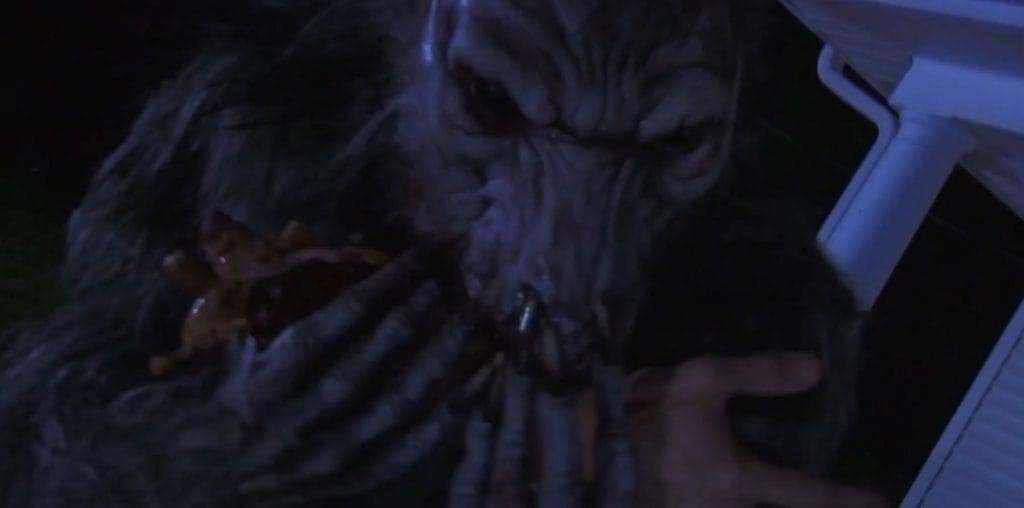In “Under a Shipwrecked Moon,” filmmaker Antero Alli presents the classic mythic tale of a hero on a vision quest, but places it in a naturalistic setting where the fabulous and the visionary is seen as a part of everyday life. Jari Hietanen (in a passionate and precise portrayal by Gabriel Carter) is a young Finnish immigrant to America, whose sea captain father died in a shipwreck when Jari was a young boy. Jari’s grandfather Esko told Jari (just before disappearing from his life) that he was descended from a long line of shamans from the indigenous Sami tribe, and Jari has been using this information to invent a series of rituals. He uses loud punk music, drugs, and special masks and other ceremonial objects to propel himself into a visionary, dreaming state, seemingly with great success. He hopes he can connect to his father’s spirit. Meanwhile, Esko has reappeared in his life after 15 years, turning up in a coma at a local hospital. Jari understands that Esko is also traveling through the astral plane in his comatose state, since the two of them apparently have the ability to enter into each others’ visions. The film weaves back and forth between the metaphysical journeys that Jari and Esko undertake in their minds, and the mundane world where Jari, his wife, his mother, and his great Uncle Oscar try to figure out what to do about the reappearance of the unconscious Esko. Esko has prepared powerful surprises for the family, and the scene where these play out is a delightful and strange resolution to the film’s themes.
The movie is tightly plotted enough so that the viewer is in constant suspense about the mysteries which Esko is hiding. Felecia Faulkner does a fine job breathing life into the character of Jari’s mother: a woman who is given only two characteristics, her devotion to the memory of her husband and her fear of traffic jams. (These two traits are referred to relentlessly whenever she appears in the film.) Clody Cates and Alan Reade create strong, highly individualized portrayals of two nurses who take an unusual level of sympathetic interest in Esko. Alli’s wife and frequent collaborator Sylvi Alli composed and performed the rich, hypnotic score for the film, and she is also unforgettable in the key role of Jari’s dead grandmother, a shaman who is the principle guide in his visions.
Lea Bender gives a powerful performance as Jari’s wife. We first see her in a boutique where she is co-owner, and there are several riveting scenes where we discover the depth of her tenderness and loyalty to her husband. (We never find out if Jari has an occupation apart from conducting private rituals.)
Special effects artist Michael McWhirter has created outstandingly rich, surprising, and expressive visual textures for the “vision” sequences. These scenes use a variety of performance techniques such as puppetry, masks, and dance. They are in an inventive combination of visual styles, looking at times like a psychedelic music video, a home movie, a silent era comedy, or a vaudeville routine. This stylistic variety is a powerful metaphor for the “show” which our brains put on for us in our dreams, by turns funny and menacing.
The Hietanen family are as alike as peas in a pod. Jari, his mother, and his grandfather all fall in love with one person with an unbreakable loyalty. In Jari’s visions, the Heitanen clan is seen as a family of dice throwing ravens. The three of them do seem to be addicted gamblers, playing high stakes games with reality. His mother, who moved with her young son to an unfamiliar life in America, may have taken the biggest gamble of all. Even Esko’s brother Oscar, who seems to be the black sheep of the family, is given to playing games, since he and his brother equally accuse each other of mishandling the money from their export business.
Like Jari, filmmaker Alli grew up without a father, indicating that this is a very personal film for him. And like Alli, Jari is equally in search of his father and in search of his Finnish roots, a search for cultural meaning which is common among immigrants. For inspiration, Jari reads from the Kalevala, the Finnish national epic poem. The passage he reads deals specifically with the alienation experienced by an exile.
Alli has a fine knack for visual storytelling; he uses unusual camera angles in a way which is unobtrusive, yet subtly heightens the drama at all times. Apart from the “vision” sequences, the visual style of the film is realistic, providing highly detailed settings, for example, for Madeline’s boutique or the hospital room. But the dialog is often metaphorical, poetic, and delivered with operatic slowness, giving us ample time to hear the echoes in the language. The style could be described as a kind of fabulist realism, and the overlap of the dream world and the waking world becomes a major stylistic feature. Esko dreams of a rowboat, and the reflections from the waves are seen on the real hospital walls. The figures gathered around his hospital bed are also seen projected onto different surfaces in his dream landscapes. As Jari says, Esko lives “in a crack between the worlds.”
Alli has created a film world where dreams and visions intersect with ordinary life at many points. The visions provide a metaphorical guide to the forces which are the underpinnings of life’s dramas. In doing so, he enables the viewer to build a bridge between the quotidian and the visionary, the living and the dead.

